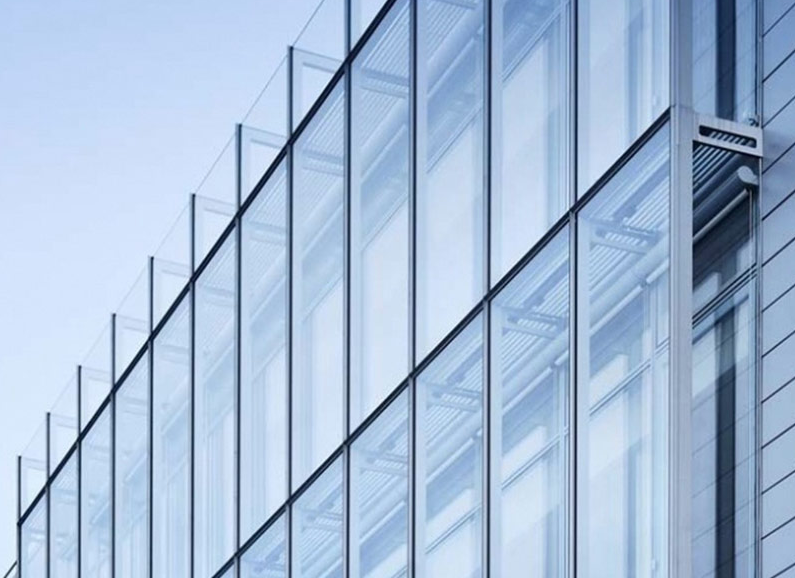
Aluminum curtain walls are thin aluminum-framed walls with thin stone, glass, or metal panels as in-fills. The aluminum curtain wall’s framing is attached to the building structure and doesn’t carry any roof or floor loads. Gravity and wind loads are transferred to the structure, usually at the floor line.
Aluminum curtain walls have been distinctive in modern architecture and expansively adopted commercially. Demand for curtain walls has immensely boosted commercial glaziers and glass manufacturers. It’s among the most in-demand glazing systems adding to a robust and aesthetic design to buildings and multiple commercial advantages.

Aluminum curtain walls’ basic function is creating an exterior envelope providing thermal insulation, protection from environmental forces, and sound attenuation while permitting light to enter the building. Aluminum frames support the glass panels held in place through various adhesive or mechanical means.
Curtain walls are installed in front of concrete slabs providing buildings with a continuous uniform and waterproof envelope. Architects and engineers highly approve of these features because of their architectural and technical performance qualities.
Often, aluminum curtain walls consist of specific components that play vital roles in the setup’s overall functioning. The components include the following:
The structure consists of an aluminum frame that acts as the curtain wall system’s backbone. Often, the frame is designed from extruded aluminum profiles joined together to create a grid-like pattern. The aluminum frame supports the glass panels and is a barrier against water and air infiltration.
Sealants help fill gaps between glass panels and aluminum frames to prevent water and air infiltration. Sealants also help reduce vibrations that could transfer to the structure’s aluminum backbone. They also absorb sounds.
These are the most visible components of aluminum curtain wall systems. Often, these are designed with laminated or tempered glass meant to withstand impact and various environmental forces like wind. The glass panels may be clear coated, tinted, or have low-emissivity coatings that enhance thermal insulation.
Anchors help attach aluminum frames to a building’s structure. Anchors are designed from stainless steel and are meant to resist various forces that act on the curtain wall system. These include forces such as seismic loads and wind.
Insulation helps provide sound attenuation and thermal insulation between the building structure and aluminum frame. Insulation also helps reduce potential condensation on the curtain wall system’s interior surface.
Installing an aluminum curtain wall involves the following:
This part of designing the curtain wall system is often done by engineers or architects who specify the profiles, materials, and dimensions of glass panels, the aluminum frame, and other structure parts.
Glass panels and aluminum frames are fabricated off the construction site following the specifications in the design. Once done, the components are transported for installation at the building site.
Typically, installing the aluminum curtain wall system involves attaching its anchors to the primary building’s structure, securing the aluminum frame, and placing the glass panels. Insulation and sealants are applied last to fill any gaps present between components.
Once installed, aluminum curtain walls are tested for specified performance criteria. These include air infiltration, structural stability, and water penetration.
Shishan Production Base
Nonferrous Metal Industrial Park, Xiaotang, Shishan Town, Nanhai District, Foshan City, Guangdong Province
Gaobian production base
Gaobian Zhangbian Industrial Zone, Dali Guangyun Road, Nanhai District, Foshan City, Guangdong Province
Company summary: + 86-757-85558828
Fax: + 86-757-85550238